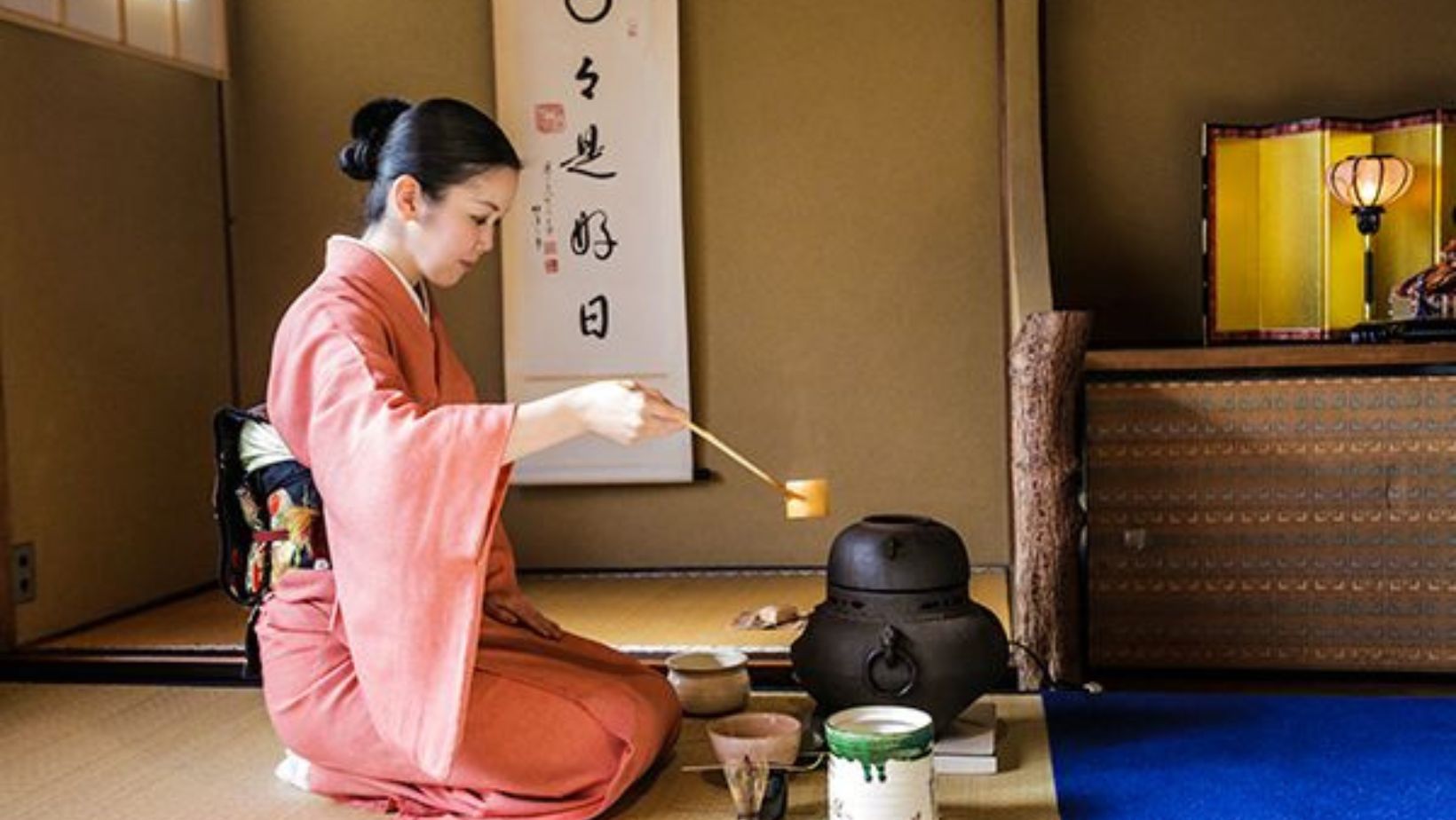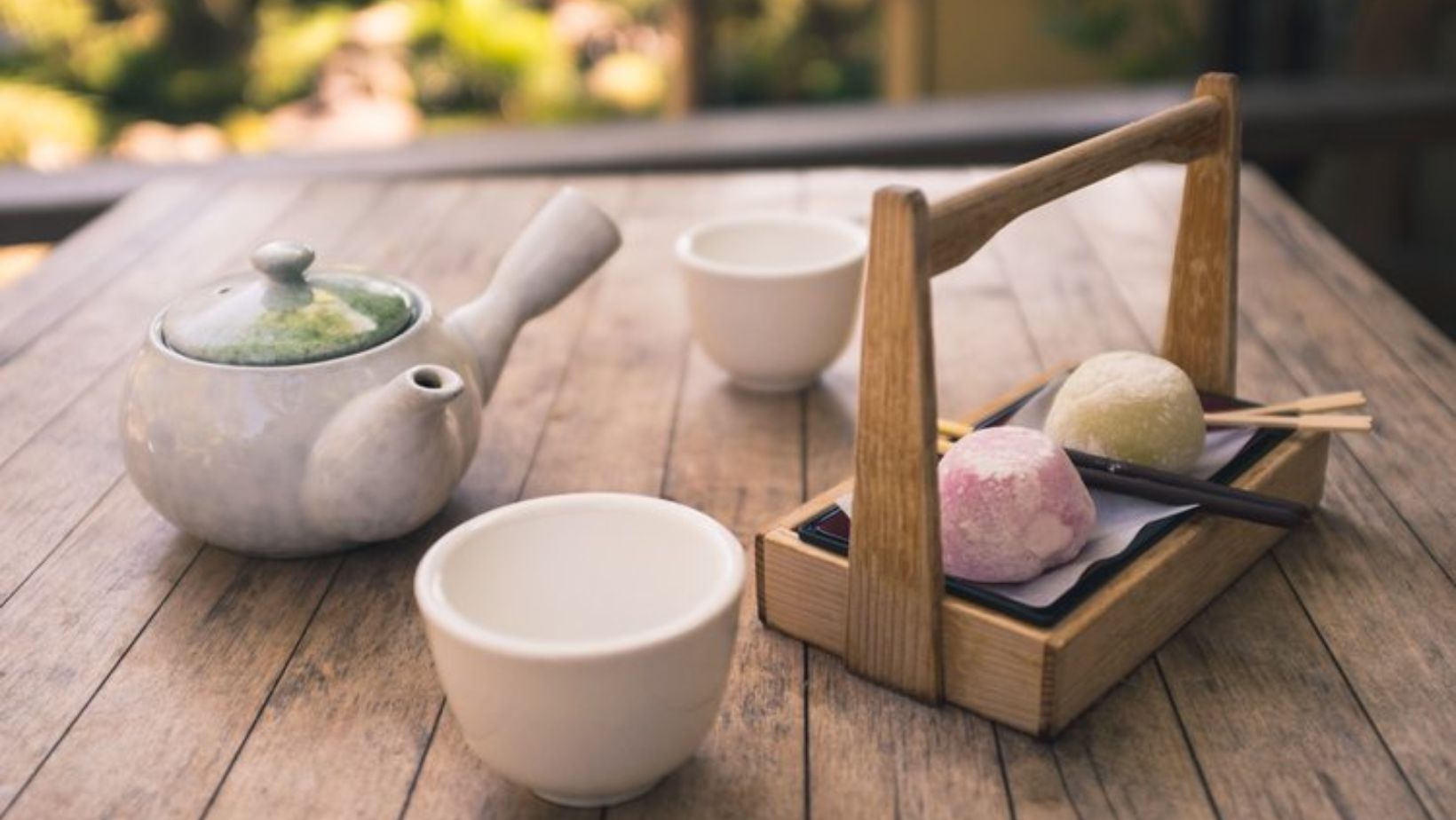In the midst of clashing swords and fierce battles, the samurai found solace in an unexpected place – the Samurai and Tea Ceremony. I want to take you on a journey back in time to explore the fascinating world of the samurai and their deep connection to this ancient ritual.
For the samurai, the tea ceremony was more than just drinking tea. It was a spiritual practice, a way to cultivate inner peace, and a means to connect with their comrades on a deeper level. Through the art of tea, they found a moment of tranquility amidst the chaos of war.
Table of Contents:
- The History and Significance of the Samurai Tea Ceremony
- Essential Elements of the Samurai Tea Ceremony
- The Art of Preparing and Serving Tea in the Samurai Tradition
- Experiencing the Samurai Tea Ceremony Today
- The Health Benefits and Cultural Significance of the Samurai Tea Ceremony
- Conclusion
The History and Significance of the Samurai Tea Ceremony

Did you know that samurai warriors played a big role in shaping this ancient tradition?
Let’s explore the fascinating origins of the tea ceremony and how it became an integral part of samurai culture.
Origins of the Tea Ceremony
The tea ceremony has its roots in 12th-century Japan when Zen Buddhism was gaining popularity. Monks drank tea to stay alert during long meditation sessions.
The Role of Zen Buddhism: Samurai and Tea Ceremony
Zen Buddhism profoundly influenced the development of the Japanese tea ceremony. The principles of simplicity, humility, and mindfulness central to Zen became integral to the aesthetics and etiquette of the tea ceremony.
Influence on Japanese Art and Culture
The tea ceremony has had a lasting impact on many aspects of Japanese art and culture, from pottery and calligraphy to architecture and garden design.
The understated beauty and wabi-sabi aesthetic of tea ceremony utensils and tea rooms has shaped Japanese aesthetics for centuries. Many famous artists and craftsmen specialized in making tea bowls and other implements.
Essential Elements of the Samurai Tea Ceremony
The samurai tea ceremony is a multi-sensory experience that engages sight, sound, smell, taste, and touch.
Let’s take a closer look at some of the key components that make this ancient ritual so special.
Tea Utensils and Their Symbolism: Samurai and Tea Ceremony
Each tea utensil used in the ceremony has a specific purpose and symbolic meaning. The bowl represents the universe. The scoop is shaped like a full moon.
The whisk represents a samurai sword, and even the placement of the utensils is significant. Together, they create a sense of balance and harmony.
The Importance of the Tea Bowl
The tea bowl is perhaps the most important implement in the tea ceremony. Samurai would often carry their personal tea bowl with them even into battle.
Some famous tea bowls were given names and became treasured heirlooms passed down for generations. Different styles of tea bowls are suited to different seasons and occasions.
Creating the Ideal Tea Room Atmosphere: Samurai and Tea Ceremony
The tea room’s atmosphere is carefully designed to promote a sense of tranquility and appreciation for the beauty of nature. Hanging scrolls with seasonal themes adorn the alcove.
Flower arrangements provide a focal point. The sounds of water boiling in the kettle contribute to the ambiance.
The Art of Preparing and Serving Tea in the Samurai Tradition: Samurai and Tea Ceremony

Preparing and serving tea in the samurai tradition is a highly choreographed art form. Every movement is imbued with meaning and is designed to show respect to the guests.
Let’s explore the role of the tea master and the steps involved in creating the perfect bowl of matcha.
The Role of the Tea Master
The tea master is responsible for every aspect of the tea ceremony, from selecting and preparing the tea to arranging the tea room. Samurai tea masters underwent years of training to perfect the art.
Famous tea masters like Sen no Rikyu were revered as cultural icons and had a major influence on the development of the tea ceremony.
Preparing the Perfect Matcha: Samurai and Tea Ceremony
Preparing the perfect bowl of matcha requires skill and attention to detail.
The powder is first sifted to remove any clumps, then mixed with hot water using a bamboo whisk until it becomes frothy. The temperature of the water and the ratio of tea to water must be just right.
The Choreography of Serving Tea
Every movement in the tea ceremony is carefully choreographed, from the way the host enters the tea room to the way the bowl is placed in front of the guest.
Watching a skilled practitioner perform the tea ceremony can be like watching a graceful dance.
Experiencing the Samurai Tea Ceremony Today: Samurai and Tea Ceremony
Although the days of warriors may be gone, their influence is nowhere seen clearer than in that cherished EventsDemoland-Kansathe)
Here are some ways to immerse yourself in the world of samurai tea:
Visiting a Ninja Museum in Kyoto
Visitors to Kyoto can experience the tea ceremony at the Samurai and Ninja Museum. The museum offers an authentic tea ceremony experience led by a tea master dressed in traditional samurai attire.
Guests can learn about the history and etiquette of the ceremony and participate in preparing and drinking matcha.
Participating in a Samurai Tea Ceremony Experience: Samurai and Tea Ceremony
Several places in Japan offer the chance to participate in a traditional samurai tea ceremony. At the Samurai Kembu Theater in Kyoto, guests can watch a demonstration of samurai martial arts followed by a tea ceremony.
The experience includes an explanation of the meaning behind each gesture and utensil.
Modern Adaptations of the Traditional Ceremony
While the traditional tea ceremony is still widely practiced, modern interpretations have also emerged. Some tea ceremonies incorporate non-traditional elements like music or dance.
Others use more casual settings like outdoor tea rooms. Contemporary artists have created modern tea ceremony utensils that push the boundaries of traditional design. However, the core principles of mindfulness and respect endure.
The Health Benefits and Cultural Significance of the Samurai Tea Ceremony
The samurai tea ceremony is more than just a beautiful ritual – it also offers some surprising health benefits. Plus, it remains an important part of Japan’s cultural heritage.
Let’s explore how participating in a tea ceremony can boost one’s well-being and deepen one’s appreciation for Japanese culture.
The Health Benefits of Drinking Green Tea
The green tea used in the Japanese tea ceremony is rich in antioxidants and has numerous health benefits. Studies have shown that regularly drinking green tea may lower the risk of heart disease, help with weight loss, and even improve brain function.
The high concentration of antioxidants in matcha is thought to be especially beneficial.
Matcha as a Superfood: Samurai and Tea Ceremony
In recent years, matcha has gained popularity worldwide as a superfood. Fine ground powder is prized for its vibrant color, umami flavor, and health properties.
Matcha contains high levels of antioxidants called catechins, as well as L-theanine, an amino acid that promotes relaxation. Some studies suggest matcha may boost metabolism and help prevent cancer.
The Enduring Cultural Significance of the Tea Ceremony
The Japanese tea ceremony remains an important part of the country’s cultural heritage. Along with incense appreciation and flower arranging, it is considered one of the three classical Japanese arts of refinement.
The tea ceremony continues to be practiced not only in formal settings but also casually among friends and family. For many, it provides a much-needed moment of quiet and reflection in a busy modern world.
Key Takeaway: Samurai and Tea Ceremony
The samurai tea ceremony blends art, culture, and mindfulness. It offers a serene escape while honoring tradition.
Conclusion: Samurai and Tea Ceremony
The samurai tea ceremony is a testament to the depth and complexity of Japanese culture. It’s a ritual that embodies the very essence of the samurai spirit – discipline, mindfulness, and a profound respect for tradition.
Through the centuries, the tea ceremony has endured, adapting to changing times while maintaining its core principles. Today, it remains a cherished part of Japanese heritage, a living link to the days of the samurai.
So the next time you sit down to enjoy a cup of tea, take a moment to appreciate the rich history and cultural significance behind this simple act. In the spirit of the samurai, find peace, clarity, and connection in the art of the tea ceremony.

